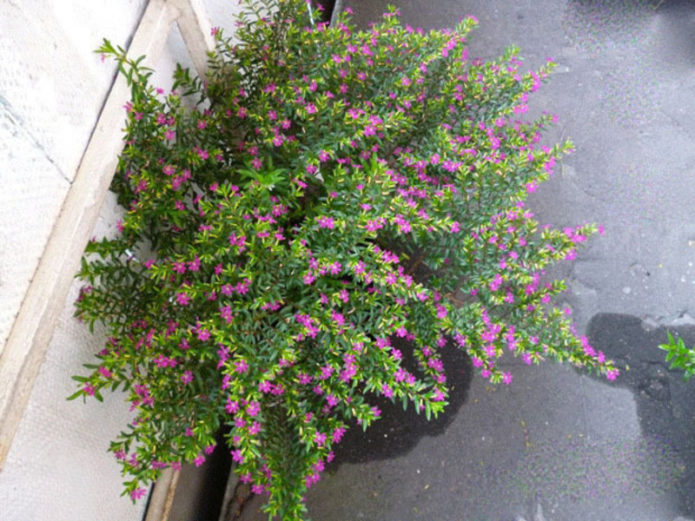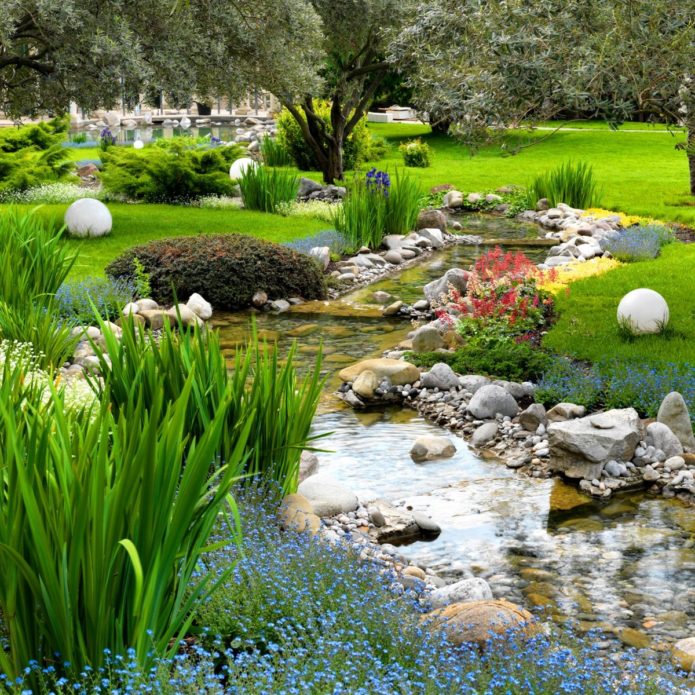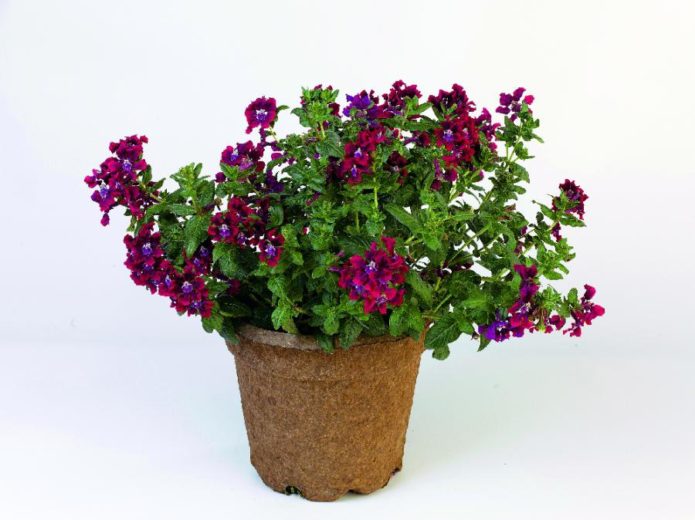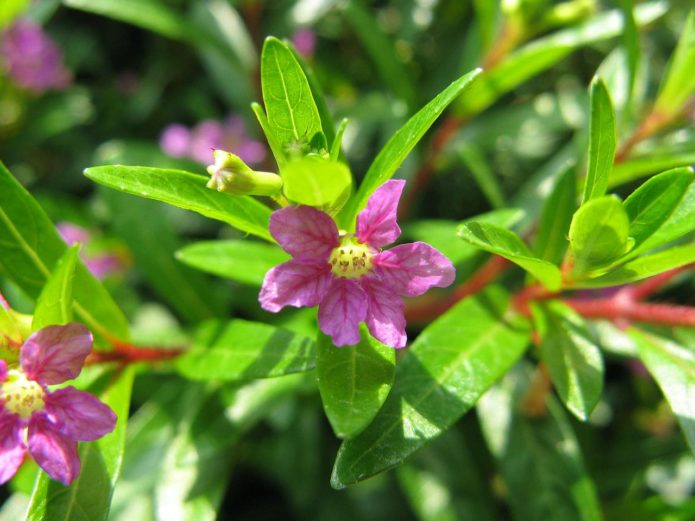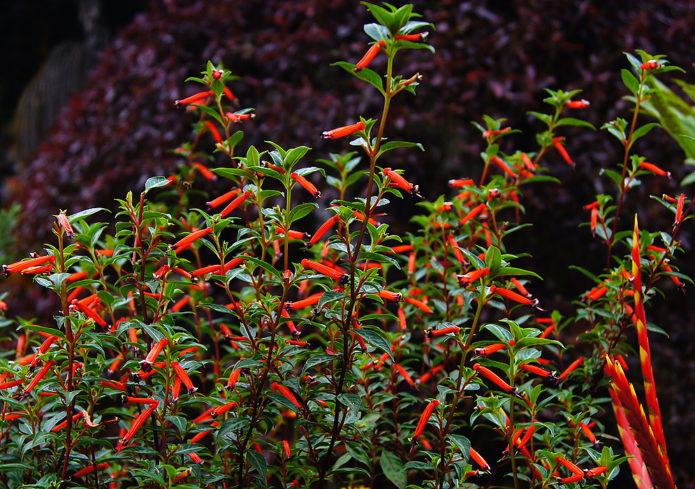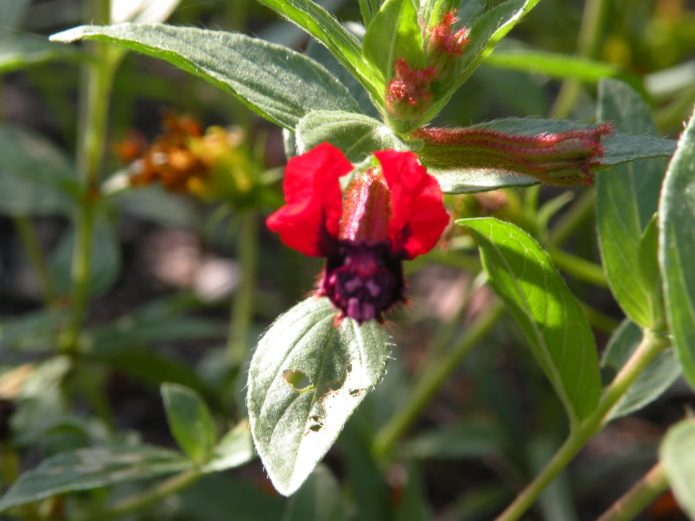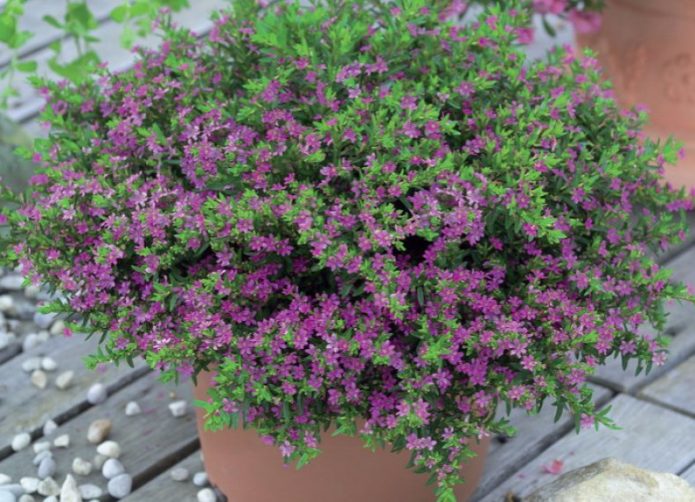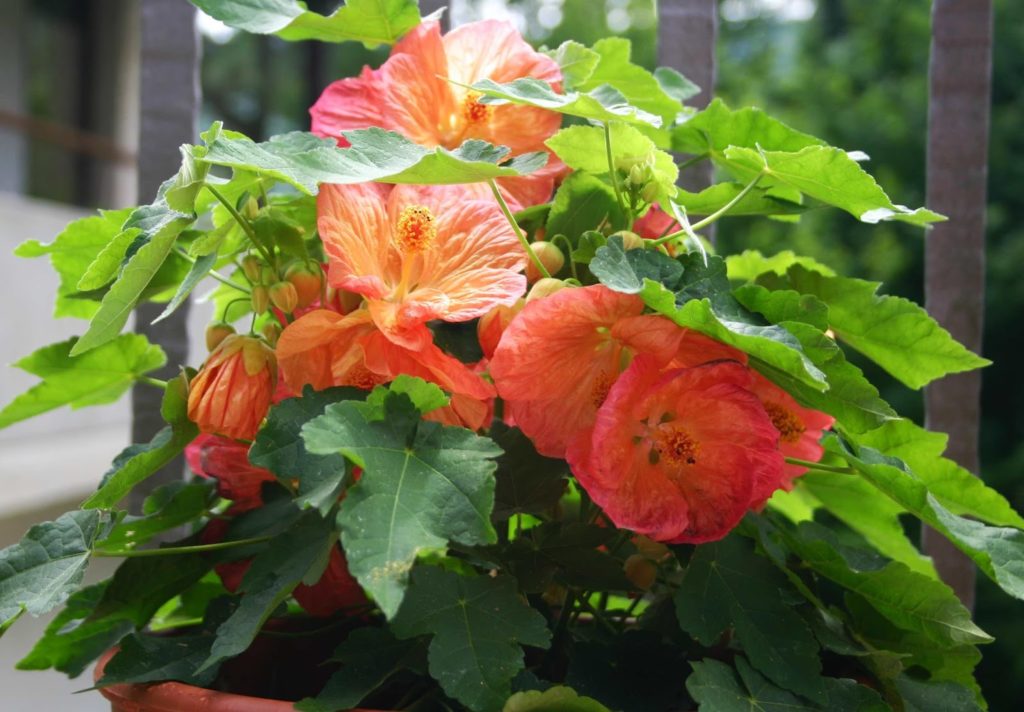Today, flowers appear in the gardens even in the northern zones of Russia, which a few years ago were considered exclusively decorative and were grown only in rooms on window sills. Over time, however, it turned out that some of these plants quite successfully endure summer in the open field and, with sufficient care, bloom profusely until autumn. True, such crops practically do not tolerate winter and are considered annual. However, in the southern regions these plants withstand winter temperatures, often there they become perennial, as in the conditions of their natural growth. Such crops include kufeya - a herb that forms characteristic flowers of small size, but in large quantities.
Features of growing a plant in our latitudes
The birthplace of kufei is Mexico and the countries of Central America. There, the plant grows in abundance and easily tolerates the local climate. Some varieties are also found in Greece. It is to the Greek language that the flower owes its name: in Greek, something snaggy, crooked is called kufei. However, thanks to the voluminous lush deciduous bush, the twisting of the stem of this plant is almost invisible. It is widely used not only as a separate decorative flower, but also as an accent in the landscape design of the site.
How to apply in garden design: photo
The culture is successfully used in the creation of individual flower beds, alpine slides and as borders to paths or children's and sports grounds.
Most types of kufei in natural conditions like watery soil, even waterlogged, therefore, in garden plots, this culture is often planted around the perimeter of artificial ponds or waterfalls.
It can also be successfully grown in flower pots, flower pots, on balconies and outdoors in the garden.
True, as already noted, this culture does not tolerate our winters and dies in most regions with the onset of frost. However, in the southern latitudes it winters (so to speak) well. However, many gardeners have adapted to take flowers into the garden in large flowerpots for the summer, and towards the end of autumn they bring them into a room where the plant calmly tolerates the winter season.
So, kufeya becomes perennial in northern latitudes. With a favorable temperature regime, the plant can begin to bloom in March, and this beauty continues until October.
Popular varieties of kufei with photos
There are many types of kufei, but several varieties are especially popular.
Kufea hyssopolis
Refers to semi-shrub plants, close to herbaceous. The height usually does not exceed 50 cm. The leaves grow on small petioles, the length of which reaches 2.5 cm. The shape of the foliage in biology is called lanceolate, it is dark green in color. The buds are small, most often pink or white, less often lilac. Due to its short stature, it is often used as a bonsai.
Kufeya fiery red
The name alone shows that the culture is decorated with bright red flowers. Leaves are ovoid and large enough - up to 6 cm.
Micro-petal kufeya
The flowers of this plant are yellowish, with bright scarlet stamens. The foliage is small.
Planting methods
In most cases, in the open field, all varieties of kufei are propagated by seeds through seedlings. In this case, they are planted at home in March, then flowering begins in June, but the April plantings are viable and bloom denser, but already in July.
The seeds are laid out literally on the surface of the soil, always loose, lightly pressed and moistened with a spray bottle. After that, lightly sprinkle.
Important! Germination of seeds must be carried out in a bright place. With low light or lack thereof, germination is significantly impaired.
The temperature should be kept within + 23-25 ° C. Seedlings usually appear after 1.5 weeks, they need to immediately provide daylight hours for at least 16 hours, otherwise the plants will begin to stretch strongly and fall to the ground. After about 5–6 days, the temperature can be reduced to 18 ° C and the plantings can be watered, but not abundantly. After 10 days, the sprouts are recommended to be transplanted into separate pots or pots. And in open ground they are planted in late May - early June.
Caring for kufei in the garden
Kufeya is not whimsical, but you cannot call it a simple plant either, therefore, in order to achieve results after planting, a number of factors should be taken into account.
During growth and flowering
In cold climates, seedlings should be planted in a well-lit, open area. The plant is not very demanding on the soil, but it prefers loose soil, rich in organic matter.
During the growing season, the flower should be abundantly fed, this should be done 2 times a week, using a complex mineral fertilizer for ornamental crops, but take half of the specified rate.
Watering before flowering should be plentiful and frequent; closer to autumn, the frequency of the procedure should be reduced.
Fiery red kufeya calmly tolerates even a short drought, other varieties require constant moisture.
Preparing for winter
If you plan to store the plant for the winter in cold climates, prune the woody cuttings in the fall, allow them to root, and plant them in flower pots, which should be brought indoors. In the spring, cuttings are planted in open ground.
Possible problems
All varieties of kufei are practically not affected by pests and diseases, so in this regard, the culture does not cause much concern. But there may be difficulties:
- if you do not water the plant in time, it can quickly wither;
- the culture should be formed and cut off the dried leaves and stems, otherwise the bush will lose its attractive appearance;
- the bushes can lie in the wind;
- lack of proper lighting can significantly slow down growth or even lead to premature wilting;
- sometimes a whitefly attacks the culture;
- rarely, but the plant is affected by mold and root rot.
Flower care at home
At home, kufeya on the windowsill also looks very attractive. To make the bush thicker and more beautiful, several plants should be planted in one pot.
In winter, it is advisable to put the pot in a less lit place and reduce watering. In October, you can stop feeding, resuming it only at the beginning of March.
Kufeya is a peculiar flower, but beautiful and not very demanding. And in landscape design, it is gaining more and more popularity. You just need to protect it from the cold and water it on time.
